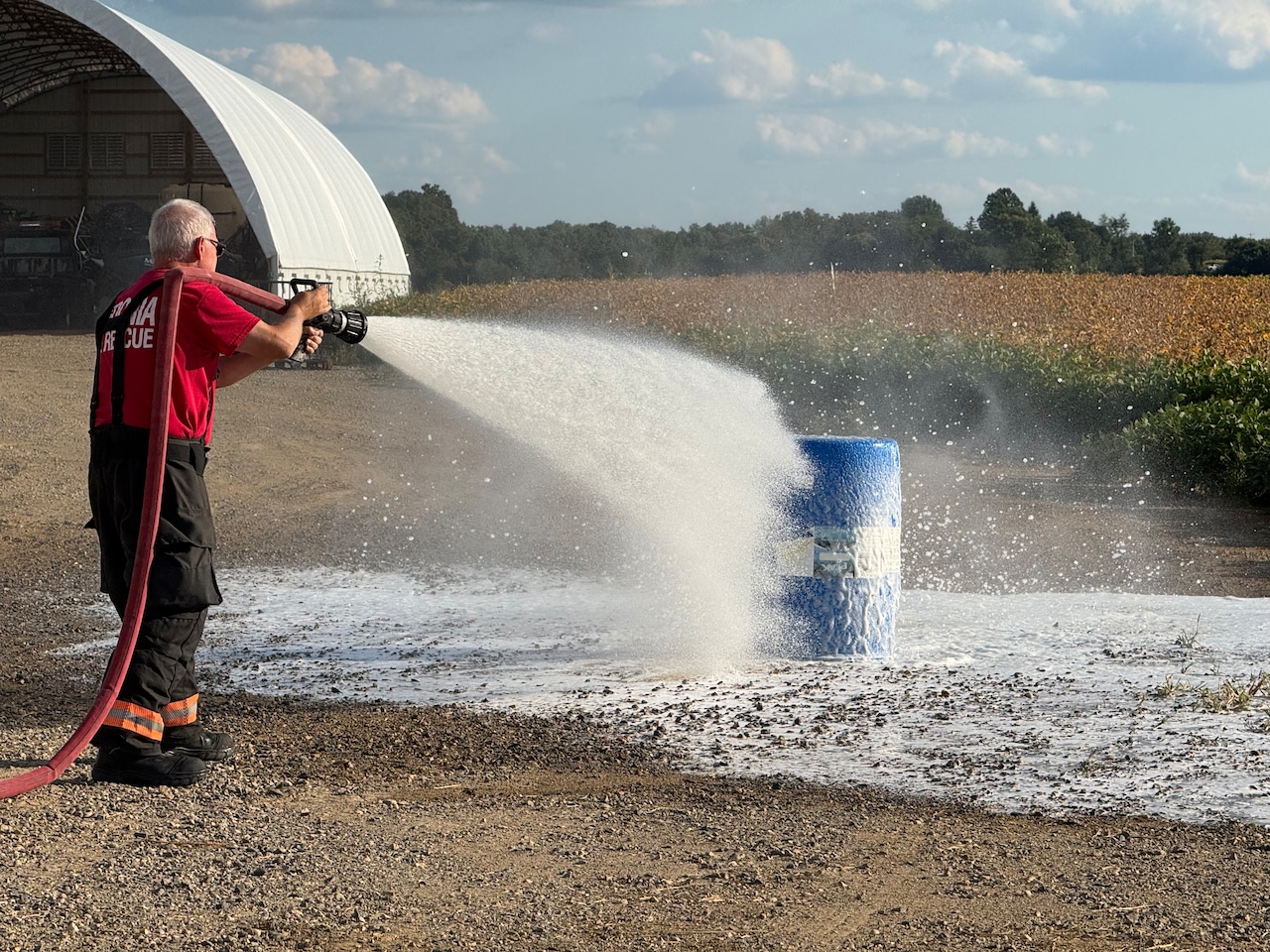
KALAMAZOO COUNTY, MI — Patrick Butler retired from the Kalamazoo Township Fire Department in 2009 after almost 35 years of fighting fires.
“I figured, I’m home free,” he said.
His next fight was with cancer.
Three years ago, Butler was diagnosed with bladder cancer. Since recovering, he attributes the cancer to his exposure to PFAS-laden firefighting foam.
Butler discovered a plant-based, PFAS-free firefighting foam. His latest mission is to convince Michigan fire departments to swap out the harmful foam for the biodegradable foam.
PFAS are per- and polyfluoroalkyl substances that are known to cause cancer, liver damage, birth defects and autoimmune diseases.
The synthetic chemical is widely used to make products resistant to stains, grease and water. PFOs, PFNAs and PFNBs are just a few of the thousands of PFAS “forever chemicals” that build up in the air, water, soil, fish and wildlife instead of breaking down over time.
PFAS is found in aqueous film-forming foam, historically used to extinguish fires at airports and fire departments. It’s the kind of foam used at Wurtsmith Air Force Base in Oscoda for decades before PFAS was detected in nearby wells.
“In 34 years, no one ever told me that the foam had a chemical in it that was going to cause me to maybe have bladder cancer,” Butler said.
Butler is passionate about safety. During his 18 years as fire chief, he said none of his firefighters had to spend the night in the hospital. Even in retirement, he continues to train firefighters and attend conferences.
“I didn’t want to see any more firefighters come down with cancers of any sort,” Butler said. “We need to have a product out there that’s safe for them to use.”
The new firefighting foam Butler discovered at a conference in South Dakota is called Soy Foam. The plant-based foam is a win for first responders, the environment and farmers, he said.
Butler started his own company, PK Foam Solutions, in April to distribute the product, he said. He’s since traveled all over Michigan, Indiana and Ohio to promote it.
The foam was originally developed for training drills, Butler said. Then, experts realized it worked.
Soy Foam is produced by Cross Plains Solutions in Georgia and distributed across the U.S. It’s made from a 100% U.S.-grown soybean paste.
It’s certified biodegradable and contains no PFAS or detectable fluorines, Butler said.
The foam can put out Class A and B fires — fires involving materials like wood, paper, gasoline, oil and propane. It’s been certified by the National Fire Protection Association for that purpose, Butler said.
Switching to Soy Foam doesn’t require new equipment, Butler said.
At $179.00 per 5-gallon pail, Butler said it costs about the same as traditional foam, which contains PFAS.
He’s sold 260 gallons of Soy Foam so far, he said, to fire departments in Caro Township, Inland Township and Fredonia Township.
“The rural areas seem more interested than the more urban areas,” Butler said, because those residents want to support soybean farmers who make up their communities.
About 2 1/2 bushels of soybeans go into 50 gallons of Soy Foam, he said.
For the Southwest Michigan Land Conservancy (SWMLC), the PFAS-free foam is a tool that fits its conservation-driven mission.
SWMLC will test the foam on controlled burns this fall, said Stewardship Specialist Dave Brown.
During a controlled burn, experts carefully use fire to burn up leaves, dry logs and other excess wildfire fuel. In addition to preventing wildfires, the process can improve wildlife and plant habitats and control invasive species.
Conservation workers typically have to carry water with them or pump it into a controlled burn site — in addition to using traditional foam, Brown said. It’s labor- and resource-intensive.
Soy Foam will reduce the amount of water needed to facilitate a controlled burn, he said, without adding harmful chemicals to the equation.
“We’re using all kinds of chemicals all the time” in conservation work, Brown said. “One less petroleum-based chemical that we’re using for habitat management is always an upside for me.”
Want more Kalamazoo-area news? Bookmark MLive’s local Kalamazoo news page.



